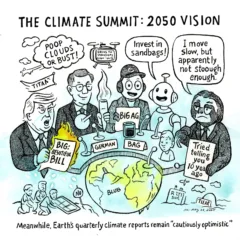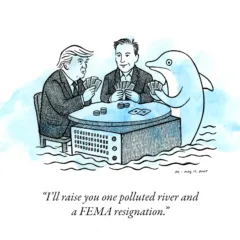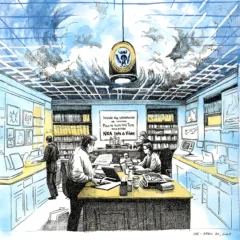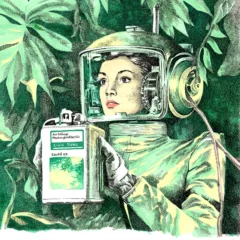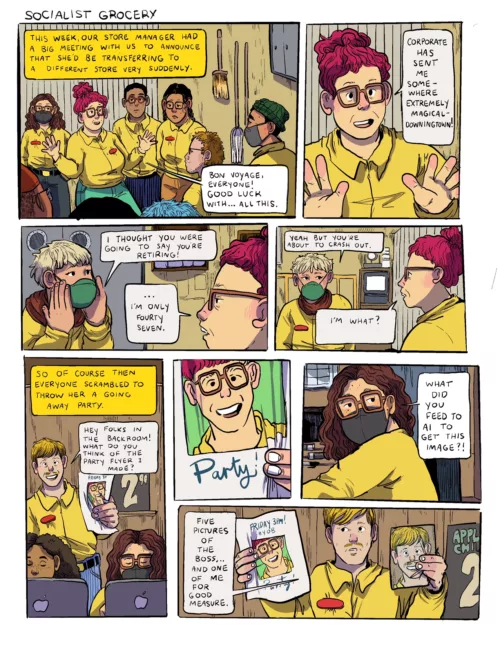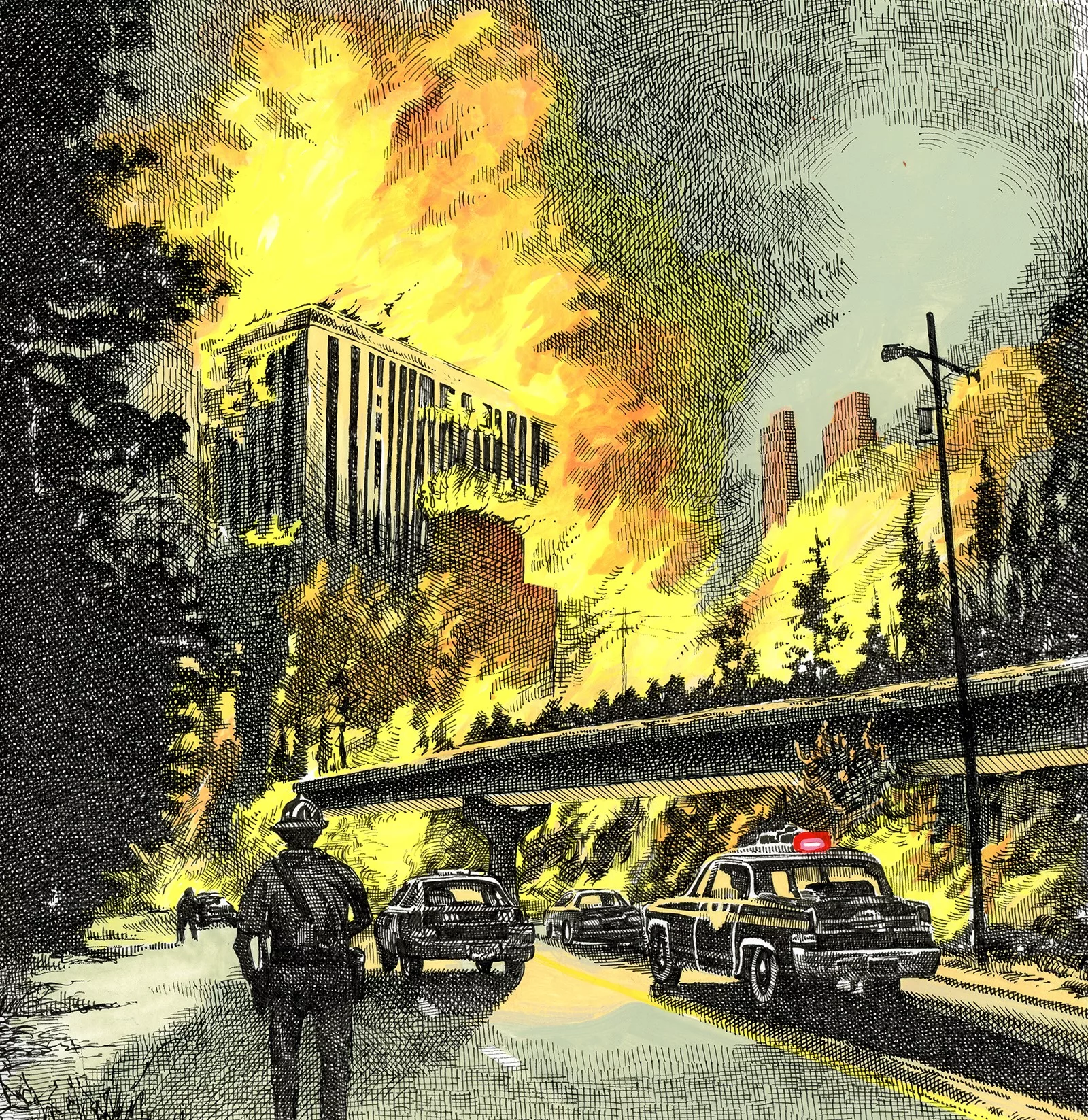
Wildfire Capital of the World: Inside L.A.’s Fiery Apocalypse
In a bold move to redefine what’s left of the 21st century, humanity has officially launched its most ambitious venture yet: Earth, Inc.—a global collaboration to simultaneously destroy, rebuild, and profit off the only known habitable planet in the universe. Shareholders include climate scientists, hedge funds, billionaires, and at least one mastodon jaw found in a New York backyard.
The mission statement? “Dark oxygen on other worlds, pink fire retardant here, and jaw-dropping Iron Age discoveries everywhere else.”
With NASA’s astronaut “venturing outside” their stuck spacecraft, and SpaceX’s Starship now firmly grounded after an explosive test flight, humanity’s aspirations to flee Earth continue to sparkle like a star (or a burning Tesla battery). The Artemis Accords, signed by Thailand this week, promise a bright future of international collaboration—provided we can get off the launchpad before climate-induced economic collapse makes fuel unaffordable.
Meanwhile, India braces for an “oil shock,” Greenland’s melting ice fuels a mineral gold rush, and scientists marvel at lunar module photos—proof that we can leave junk everywhere, not just in orbit.
In Los Angeles, where wildfires and art studios burn with equal fervor, the smog-filled air tastes of charred ambition and oxidized methane. Residents debate whether the air quality index still means anything as they dodge fire retardant-pink neighborhoods and scramble for insurance against the county’s most expensive wildfires to date.
But hope isn’t entirely extinguished. Tongva leaders credit traditional fire mitigation practices for sparing parts of their ancestral lands, while artists vow to rebuild Altadena studios with “Wild West” grit. “The birds are back,” someone murmurs, staring into the smoke-filled abyss.
Joe Biden, America’s first climate president, exits stage left with an incomplete legacy, leaving Trump poised to declare a national energy emergency on Day One. Expect coal-powered AI and the end of Musk’s climate credits as Trump doubles down on his vow to target scientists.
Still, not everyone is playing villain. African nations and small islands propose debt-for-nature swaps, while U.S. peatlands, once drained and dried, may soon serve as carbon sinks. The Treasury is even earmarking water firm fines for sewage cleanup, and Biden’s stricter EPA standards could finally make air pollution “blind spots” less invisible.
Not all innovations are created equal. While researchers explore native plants’ potential to combat road salt pollution and study past hurricanes to reduce future risk, skeptics pan methane oxidation tech as unhelpful to the climate crisis. But hey, at least we’ve finalized our strategy for a human presence in space.
The “once-in-a-century” discovery of Pompeii’s opulence serves as a haunting parallel to our own gilded collapse. Luxury and ruin, hand in hand—a fitting metaphor for Greenland’s gold rush and L.A.’s charred mansions.
As schools burn, aid groups at the border brace for Trump’s policies, and actuaries warn of a 50% economic contraction from climate shocks, humanity faces the question: rebuild or retreat? Some say the “net zero hero” myth places too much blame on individuals, while others see hope in collective action.
But one thing’s clear: there’s no place that’s truly safe. Whether we’re sifting through wildfire ruins or staring at the stars, Earth, Inc. reminds us of our universal truth: when everything’s on fire, someone’s always selling tickets to the show.
Chatty Geppetto’s log for January 22, 2025:
- 56 news headlines pulled from 14 different news sources via RSS on January 19, 2025. Sources include the BBC, CBS News, CNBC, Fox News, Grist, the Guardian, Inside Climate News, Los Angeles Times, the New York Times, NPR, Politico, Reuters, Science Daily, and the US Department of State
- 3 ChatGPT queries; estimated 6.6 g CO2e produced
- 8 MidJourney queries; estimated 15.2 g CO2e produced
- 11 hours to create the mixed media drawing; estimated 20,163 g CO2e produced. This drawing was created on vellum-surfaced Bristol paper with a painted gouache base and layered with hand-drawn pen and ink hatching.
- 3 hours to scan the original drawing and assemble and publish the digital post; estimated 93.75 g CO2e produced


